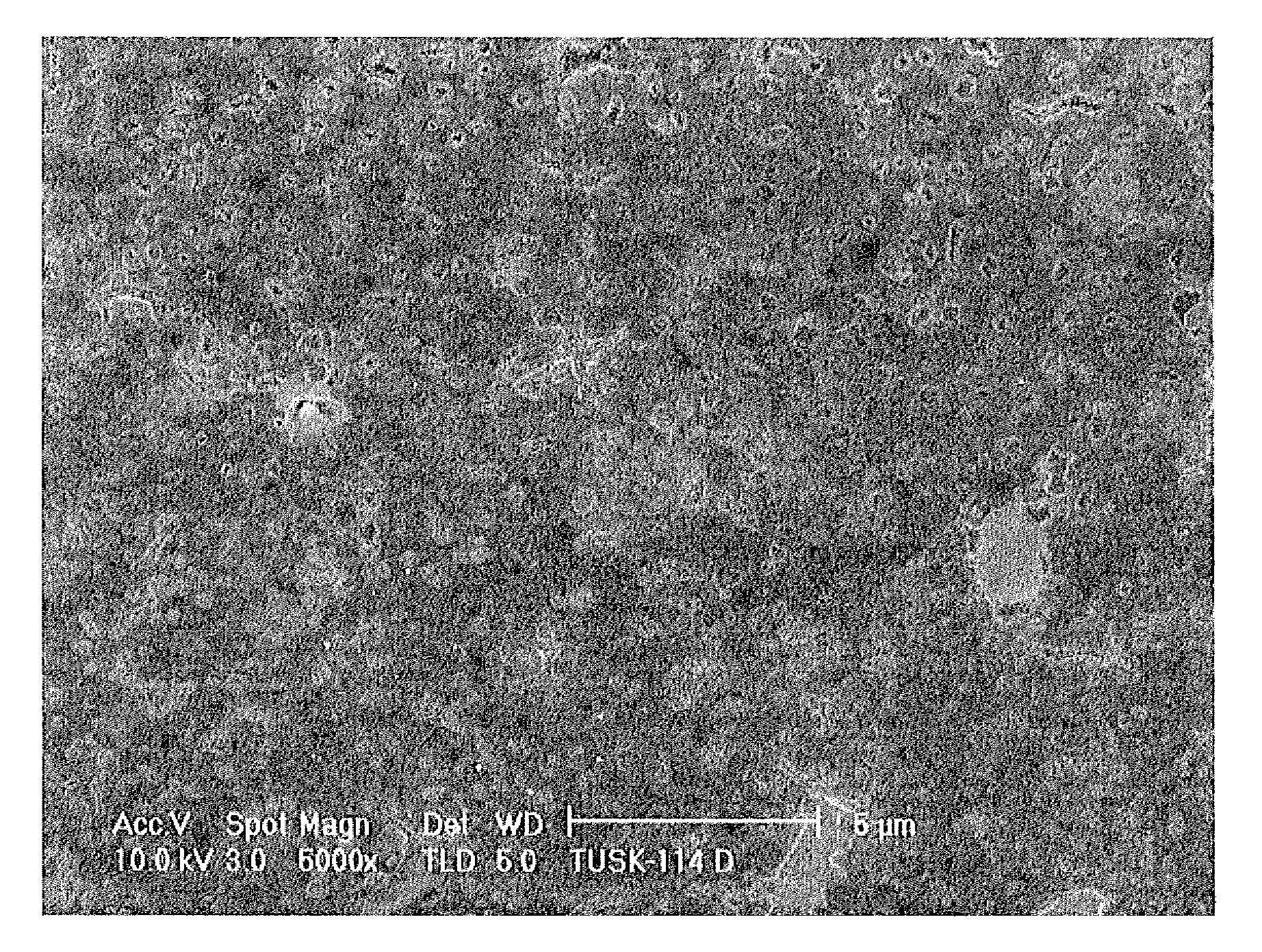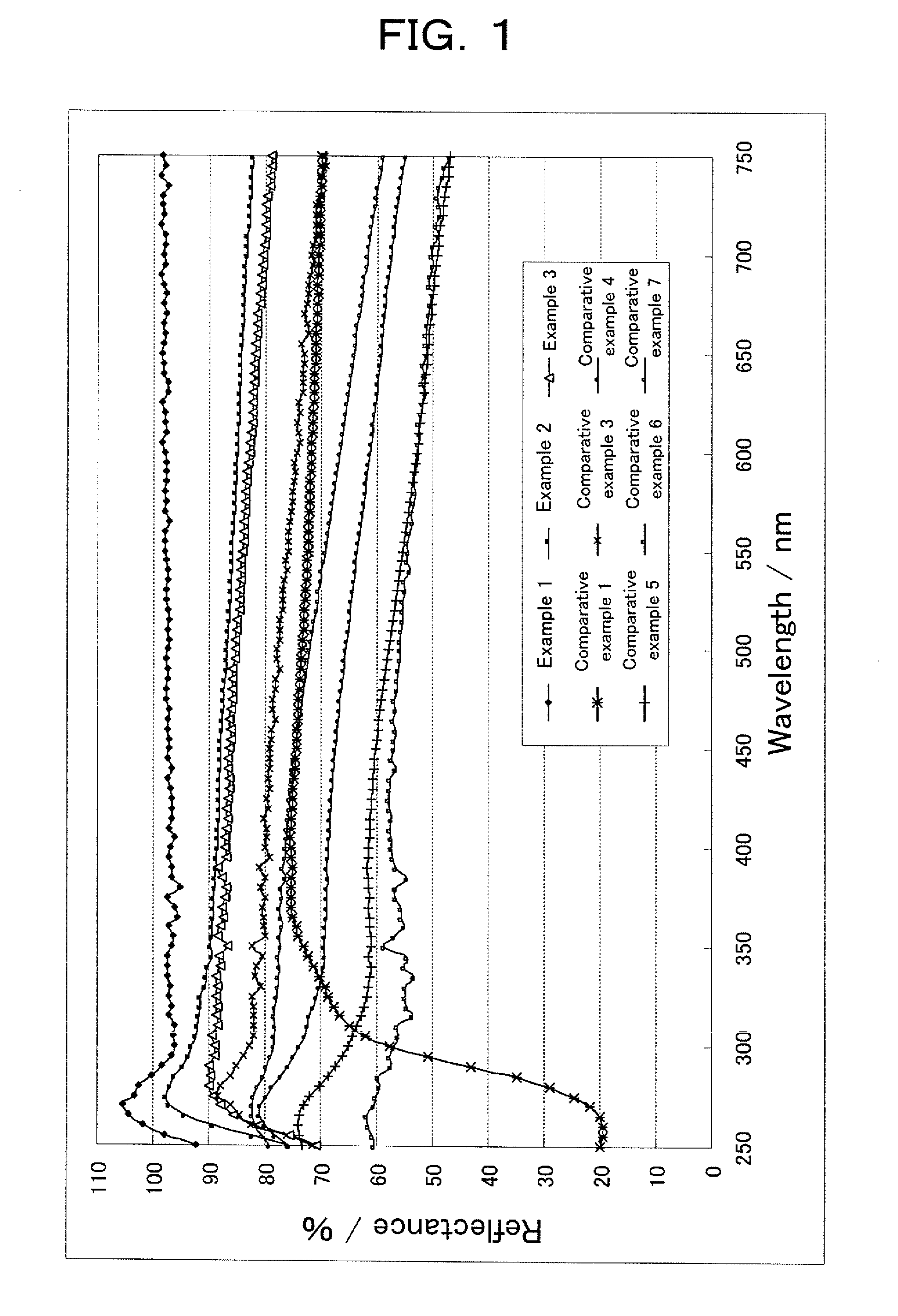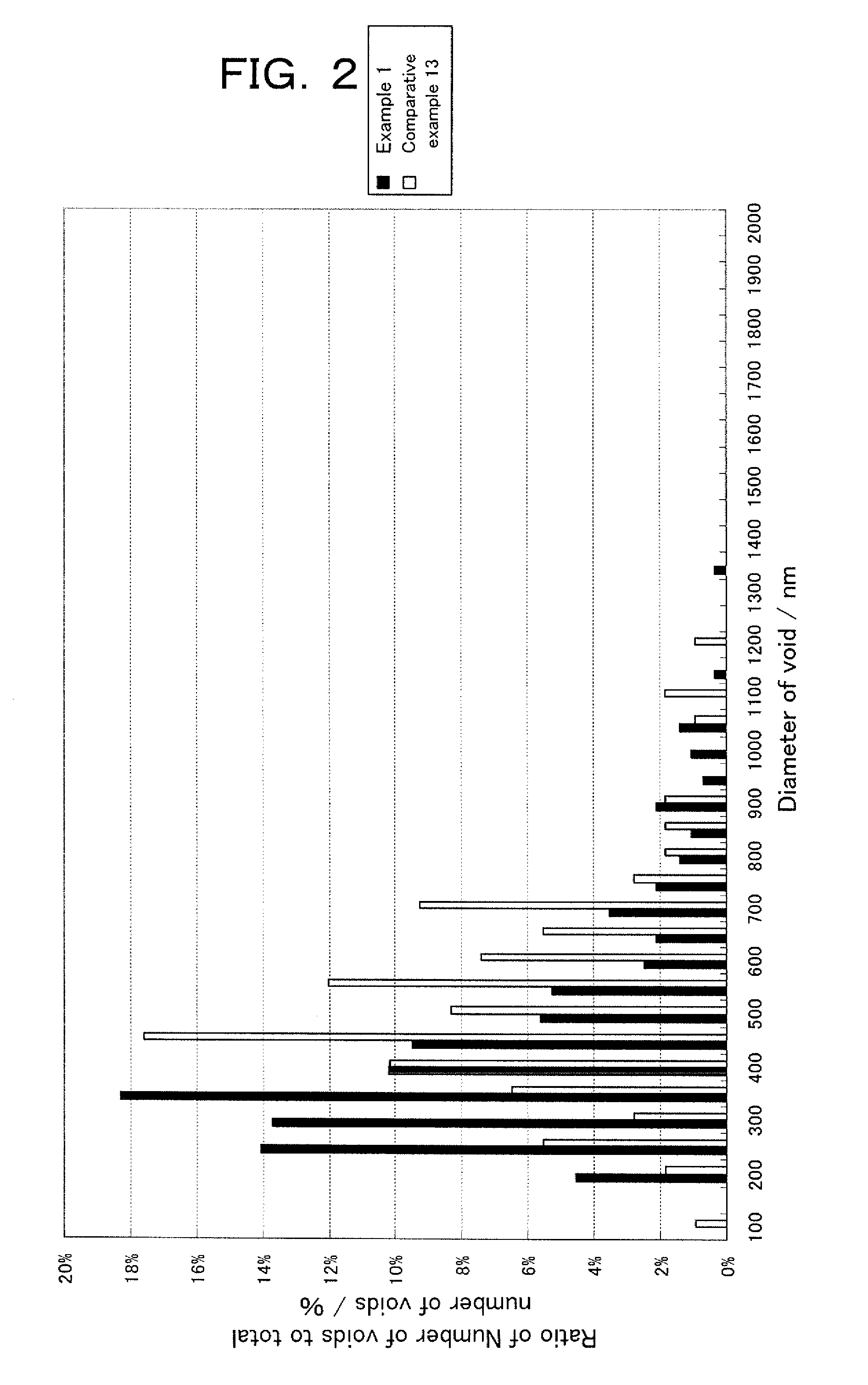Sintered Ceramics for Mounting Light-Emitting Element
- Summary
- Abstract
- Description
- Claims
- Application Information
AI Technical Summary
Benefits of technology
Problems solved by technology
Method used
Image
Examples
example 1
[0114]The aluminum nitride board S-1 fabricated to become about 0.6 mm in thickness at the end of calcinations was fed into a vacuum heating furnace just as the sintered body is. The pressure in the furnace was vacuumed down to 0.01 Pa or less; thereafter, high-purity nitrogen-gas of which dew point is −70° C. or less was introduced into the furnace so as the pressure to be normal pressure. Under this atmosphere, temperature was raised up to 1400° C. at a rate of 200° C. / hr.
[0115]When the temperature became 1400° C., the sintered body was heated for 144 hours under circulation of dry air of which dew point −70° C. or less at a rate of 0.5 L / min. The obtained sintered body taken out from the furnace, in which temperature was decreased to the room temperature, was white in color-tone.
[0116]The measurement result of reflectance is shown in Table 1 and FIG. 1. As seen from these, reflectance in all wavelength in the range of 250˜750 nm was 90% or more. When this sintered body was analyz...
example 4
[0121]Except for treating the aluminum nitride board S-1 by mirror polishing until the thickness becoming 0.4 mm, Example 4 was carried out in the same manner as Example 1 to obtain an oxidized test piece.
[0122]The evaluation results of the various properties are shown in Table 2.
example 6
[0125]Except for treating the aluminum nitride board S-2 by mirror polishing and for setting the oxidation temperature to be 1350° C. and oxidation time to be 50 hours, Example 6 was carried out in the same manner as Example 1 to obtain an oxidized test piece. The evaluation results of the various properties are shown in Table 3.
PUM
| Property | Measurement | Unit |
|---|---|---|
| Temperature | aaaaa | aaaaa |
| Temperature | aaaaa | aaaaa |
| Temperature | aaaaa | aaaaa |
Abstract
Description
Claims
Application Information
 Login to View More
Login to View More - R&D
- Intellectual Property
- Life Sciences
- Materials
- Tech Scout
- Unparalleled Data Quality
- Higher Quality Content
- 60% Fewer Hallucinations
Browse by: Latest US Patents, China's latest patents, Technical Efficacy Thesaurus, Application Domain, Technology Topic, Popular Technical Reports.
© 2025 PatSnap. All rights reserved.Legal|Privacy policy|Modern Slavery Act Transparency Statement|Sitemap|About US| Contact US: help@patsnap.com



